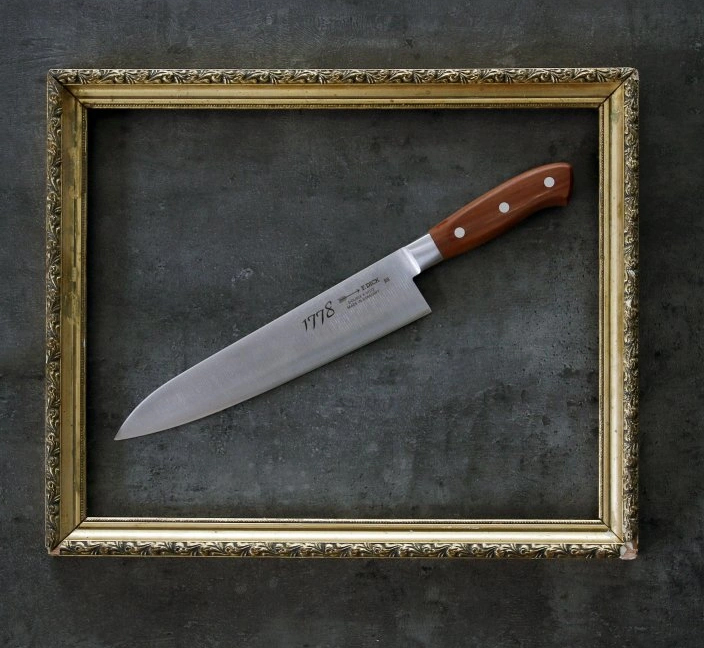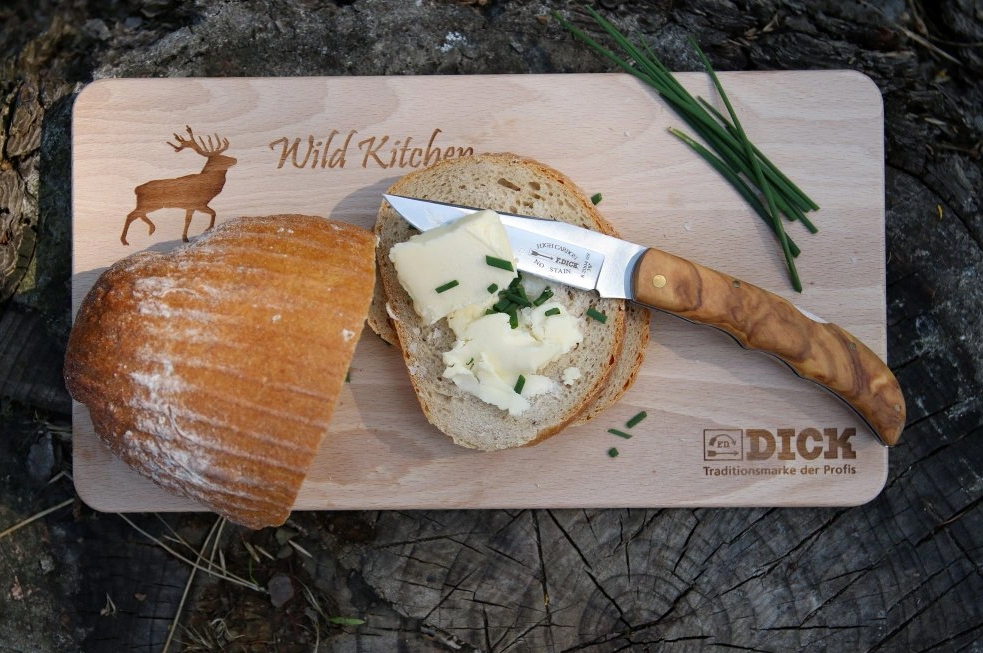Pocket knives are more than just tools - they are travel companions, helpers in times of need, and versatile tools that everyone can use from time to time. Choosing the right knife depends on a few key factors. We'll help you navigate them and also add some tips on how to care for your new piece.

How many blades do I need
"Less is more" or is it "the more the better" with pocket knives? It depends on your needs. So we'll introduce you to the different types of pocket knives so you know what to choose from:
Single blade pocket knives
They have a simple design with a 5 - 15 cm long blade. They are usually lightweight and sometimes even have perforations to keep weight to a minimum. These knives are easy to handle and are suitable for a variety of tasks, from outdoor adventures, to outdoor cooking, to practical uses in everyday life, such as opening packages, etc.
Double-bladed pocket knives
They are equipped with two blades that have different shapes, lengths and sizes, making them suitable for different applications. The main blade is sturdier and usually measures 5-10 cm, while the second blade is thinner and often has a serrated edge or sharp point. Two-bladed knives are especially appreciated by outdoor enthusiasts, often used by fishermen or craftsmen, but they are also useful in a pocket or hand luggage as a practical tool in a variety of situations.
Multifunctional knives
A multifunctional knife, such as the Swiss Army Knife or "Swiss", contains various other tools in addition to the main, widest blade. These include a can opener, screwdriver, saw, scissors and many others. This makes the multi-function knife a versatile tool that should not be missing in any hiking backpack, but also in your regular carry-on luggage.
Best pocket knives according to customer reviews
Smooth or serrated blade?
Unless you're buying a knife that has one blade with a smooth edge and one with a serrated edge, you're faced with a difficult decision... We'll tell you the pros and cons of both so you don't get the wrong idea:

Smooth blade
Benefits: Smooth blade allows better control, greater precision and therefore cleaner cuts. In addition, a smooth blade is easier to sharpen at home.
Disadvantages: With a smooth knife, it is difficult to cut a loaf of bread, cut a rope or other objects that require cutting movements.

Serrated blade
BenefitsA: The serrated knife is well suited for cutting hard materials and raw materials, thanks to its thinner teeth, which make it easier to break the surface.
DisadvantagesA: Fine materials will be disturbed by the serrated blade and left frayed. Besides, a serrated knife requires professional sharpening in almost all cases.
Simply put, a smooth knife will cut meat well when camping, but for cutting branches for the fire, choose a serrated one. And if you plan to do both and don't want to have two knives, choose one that combines both variants - it is smooth from the tip to the middle and then serrated up to the handle.

What should the closing knife be made of
Before buying, it's important to have at least some idea of how you want to use the knife, whether you're going to use it to cut food or to cut wood.
There is no discovery truth that a blade naturally dulls with use. The rate of wear depends on the material from which it is made, which also affects other aspects such as flexibility or corrosion resistance. If you're not a connoisseur, you're buying a knife for purely practical reasons and you don't want to take much care of it, reach for a stainless steel tool. As its name implies, it resists rust and is also flexible and therefore more resistant to damage than stronger materials (such as damascus steel). Although it is easier to dull, it is not difficult to sharpen.
If you're a discerning customer who isn't afraid of more consistent care or more laborious forms of sharpening, then look for knives made from carbon steel or damascus. They have the advantage of staying sharp for a really long time.
The material of the handle also plays a role. Each has its pros and cons. Wood is aesthetic and pleasant to the touch, but it requires regular maintenance and can show signs of wear. Plastic or composite materials may not look as elegant, but they are durable, lightweight and more affordable. A metal handle is durable and looks timeless, but at the same time it tends to make the whole knife heavier and can make the handle slip, especially when it gets wet.
Quality pocket knives
Our tip
Read also

Why it pays to invest in quality knives
We will advise you which knives are worth investing in and where you can save money.

How to care for a pocket knife
- Cleaning: Consistently remove dirt from the knife after each use. If you're outdoors, at least wipe it down with a napkin or handkerchief, and as soon as you have access to running water, finish cleaning with a sponge and mild detergent. Then dry the knife thoroughly.
- Lubrication: From time to time lubricate the moving parts of the knife with special oil or other suitable lubricants. Always apply just a few drops and open and close the knife several times to spread the lubricant evenly. Then wipe off any excess oil with a soft cloth. Always apply the lubricant to a clean and dry knife.
- Grinding: Since pocket knives are often used for demanding tasks that can greatly dull or damage their blades, they must be given due attention. Therefore, check your knife after each use and if it seems less sharp,frill her. Pocket knives are usually sharpened at an angle of 20-25 degrees. However, remember that each blade requires different sharpening techniques. Since pocket knives are generally short, smaller sharpening tools are more suitable for sharpening them.
If your knife blade is damaged or can no longer be sharpened at home, have it professionally sharpened.
- Storage: Storage of pocket knife is useful protective sleeves. Always store only a knife that is clean and dry in the sheath.
Pocket knife - the perfect gift for men
Are you looking for a special gift for your partner, dad, friend or other close male friend? Then reach for a pocket knife. It can be a very personal gift that combines all the qualities that men appreciate so much - utility, style and also long-term value. In short, a pocket knife is a versatile tool whose necessity in outdoor activities is undeniable, but it can also find its place in a jacket pocket, where it can help in everyday situations. We have more gift tips for men for you.
Popular pocket knife brands
A typical manufacturer of multifunction knives is the brand Victorinox or also Zwilling. However, it is also worth mentioning the young brand Deejo, which was founded in 2010 with the desire to create a lightweight, practical and at the same time distinctive instrument from the finest materials. Deejo knives have quickly gained a reputation as a premium brand that combines functionality, durability and elegance.
Pocket knives are usually sharpened at an angle of 20-25 degrees. This angle provides a balance between sharpness and maintaining a long blade life.
The frequency of grinding depends on the frequency of use and the type of activity. For normal daily use it is recommended to sharpen the knife once a month. With heavy use, such as outdoor activities, it may be necessary to sharpen every 1-2 weeks.
These are single blade knives, double blade knives and multifunction knives. Single-blade knives are simple and lightweight, double-blade knives offer different blades for different tasks and multi-function knives contain other tools in addition to the blades, such as a screwdriver, saw or bottle opener.
The most common material for pocket knife blades is stainless steel. It is the most resistant to corrosion and damage. However, carbon and damascus steel knives are also available, which offer superior sharpness but require a little more care as they corrode more easily.
Regularly and consistently clean the blade with water using a soft sponge and mild detergent. Then dry thoroughly. Lubricate the moving parts of the pocket knife from time to time. Store the knife in its protective sheath.
When choosing a pocket knife, consider the purpose of use, size, weight and material of the blade and handle. For everyday carry, choose a lightweight and compact knife; for outdoor activities, choose a sturdier model with more features.
The legality of pocket knives varies by country and local laws. In general, fixed-blade knives longer than a certain length (usually 12 cm) are prohibited in public places.
A pocket knife with a blade no longer than 6 cm long and 1 cm wide can be taken on board the aircraft. All other knives must be stowed in checked baggage.










